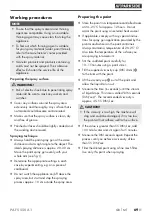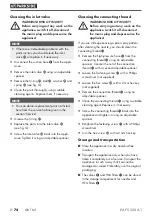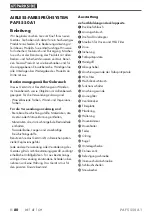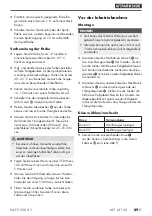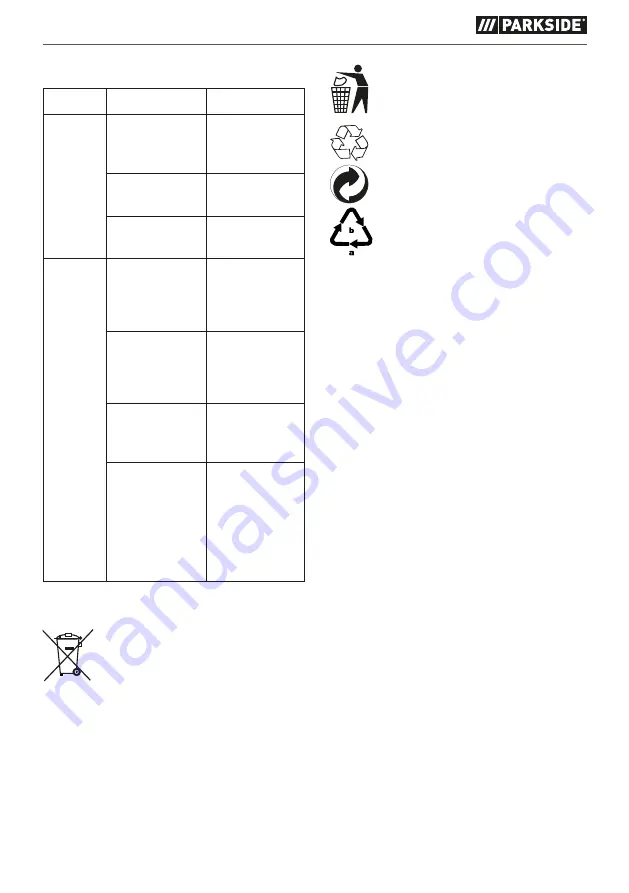
PAFS 550 A1
GB
│
MT
│
75
■
Troubleshooting
Fault
Possible cause
Remedy
The paint
spray gun
does not
spray.
The inserted noz-
zle is clogged.
Clean the nozzle
and use a suita-
ble HEA filter.
The HEA filter
is clogged.
Clean or replace
the HEA filter.
The paint spray
gun is locked.
Unlock the paint
spray gun.
The motor
is not
running.
The appliance is
not plugged in.
Insert the mains
plug into an
appropriate
mains socket.
The appliance
has overheated.
Follow the instruc-
tions in the section
"Overheating pro-
tection".
There is no volt-
age on the mains
socket.
Check the mains
socket.
The appliance has
been operated
and maintained
according to the
operating instruc-
tions, but still does
not work.
Contact our
Customer
Service depart-
ment.
Disposal
Do not dispose of power tools
in your normal domestic waste!
The adjacent symbol of a crossed-out
dustbin means that this appliance is
subject to Directive 2012/19/EU. This directive
states that this appliance may not be disposed of in
the normal household waste at the end of its useful
life, but must be taken to specially set-up collection
locations, recycling depots or disposal companies.
The disposal is free of charge for the user.
Protect the environment and dispose of this
appliance properly.
Your local community or municipal
authorities can provide information on
how to dispose of the worn-out product.
The packaging materials have been
selected for their environmental friend-
liness and ease of disposal and are
therefore recyclable. Dispose of pack-
aging materials that are no longer
needed in accordance with applicable
local regulations. Dispose of the pack-
aging in an environmentally friendly
manner.
Note the labelling on the packaging and separate
the packaging material components for disposal if
necessary. The packaging material is labelled with
abbreviations (a) and numbers (b) with the
following meanings: 1–7: Plastics, 20–22: Paper
and cardboard, 80–98: Composites.
Environmental compatibility and material
disposal
■
Paints and lacquers … are considered
hazardous waste and must be disposed of
accordingly.
■
Observe the local regulations.
■
Observe the manufacturer's instructions.
■
Environmentally harmful chemicals must not be
allowed to get into the ground, groundwater or
any body of water.
■
Spraying work next to bodies of water or
adjoining surfaces thereof (catchment area) is
therefore not permitted.
■
When purchasing paints or lacquers … pay
attention to their environmental compatibility.









